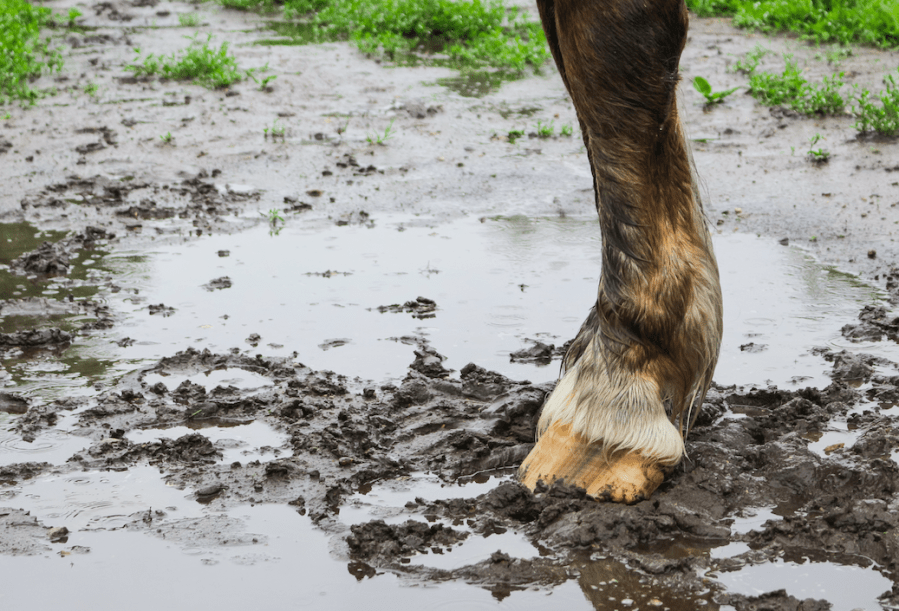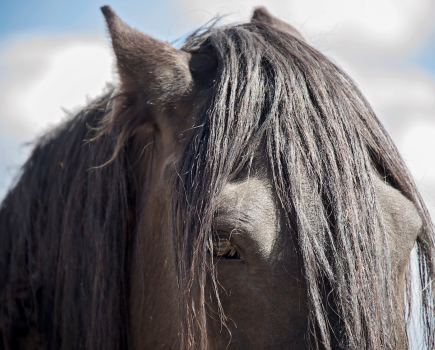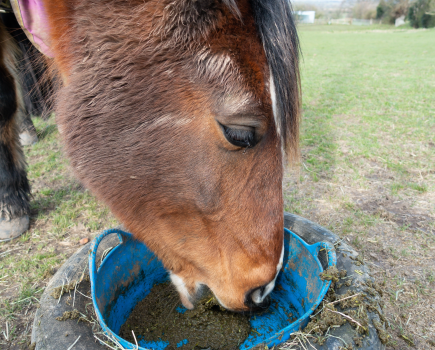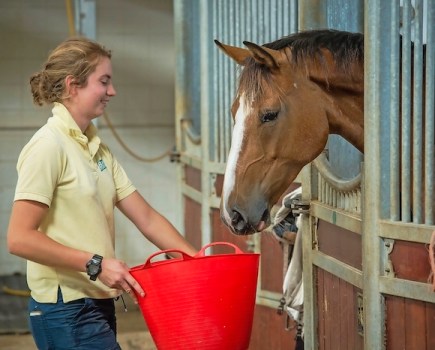Thrush in horses is characterised by a black, foul-smelling discharge from the hooves and urgent treatment is required. In my experience it is usually (but not always) the result of poor hoof care and/or the horse being kept in wet ground conditions, which makes maintaining good hoof hygiene very difficult.
This is why it’s a particularly troublesome condition in winter, when horses typically spend more time in a stable or outside in wet, muddy fields.
Thrush is an infection of the hoof’s frog, frog grooves and heel region. It is caused by a variety of bacteria and fungi, with one particularly aggressive species of bacteria called Fusobacterium necrophorum being commonly involved.
It may affect one or multiple feet and one or more of the three clefts of frog — medial, lateral and central — may be affected. Thrush is more commonly found in the hind feet, especially if your horse has deep narrow frog clefts.
How to tell if it’s thrush
Thrush is usually quite easy to spot, but occasionally it only becomes apparent when a hoof pick is advanced deep into the affected cleft.
A horse with thrush may well be lame with a foul smelling, slimy, dark discharge around the frog. Pressing on the frog with your thumb often causes pain.
The frog itself may be growing abnormally with loose rubbery flaps. The infection causes degeneration of the frog tissue and the frog tissue may be under-run (separated). In severe cases, the bacteria may have eaten away at the frog to cause open sores into the deeper sensitive tissues.
Luckily most cases of thrush are superficial and limited to the frog tissue. In more severe cases, the infection may extend to the digital cushion, hoof wall and heel bulb regions, resulting in a lame horse and the need for treatment.
Occasionally, swelling extends up the lower part of the leg to the knee or hock. Thrush is usually recognised by your vet or farrier on signs alone, but biopsies can be taken of the frog tissue to confirm it.
Prevention advice
Thrush causes the hoof and frog to become soft and crumbly, allowing the bacteria and fungi to penetrate and establish themselves leading to infection.
Wet and muddy fields or soiled damp bedding are particular culprits with deep litter style bedding being amongst the worst. For this reason, thrush is much more common in winter than summer.
Prevention is of course better than getting to the stage where it requires treatment, so picking out your horse’s feet properly twice a day and maintaining clean dry bedding is essential.
It can be difficult during the wetter months but avoiding having your horse standing in a badly poached field for long periods is important.
In addition, regular trimming of hooves and frog by a farrier is important to maintain good hoof conformation and frog health.
Intermittent use of a disinfectant such as iodine to scrub out the hooves about once a month would also be a good idea.
I have known thrush to develop in horses shod with pads between the shoe and the hoof, especially when moisture and dirt become trapped underneath the pad.
It can be difficult to adequately clean the frog and clefts under and around bar shoes and impossible under sole pads. This puts horses who wear these shoes for other foot problems, such as bruising of the sole, at increased risk of suffering from thrush.
Occasionally, though, thrush develops even when the horse’s management and foot care is exemplary, and owners often find this difficult to accept. In such patients, foot conformation and sheared heels are likely contributory factors, but some horses just develop thrush for no apparent reason.
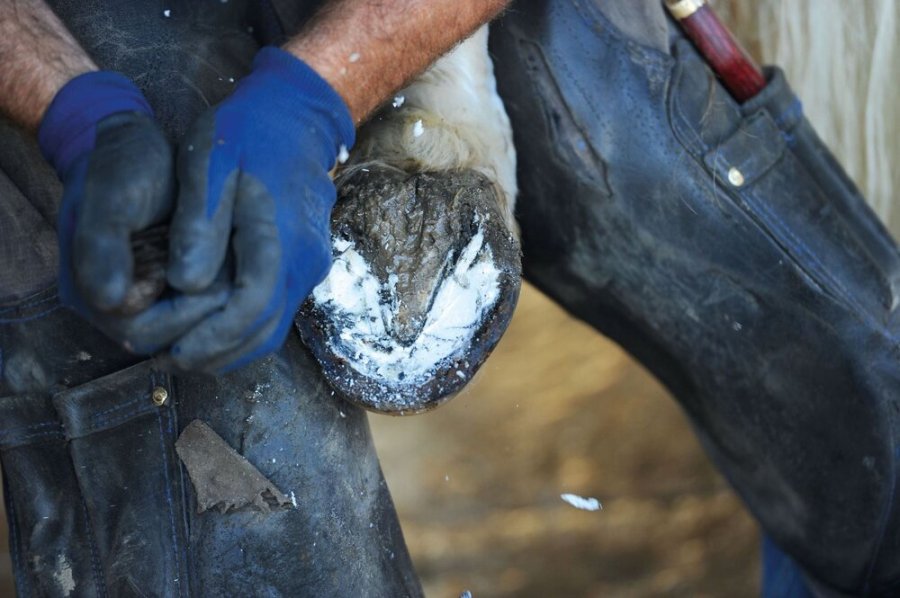
Treating thrush
Without treatment, a thrush infection will progress and may affect the deeper structures within the horse’s foot causing serious distortion of the frog and ongoing lameness.
The first treatment step is to look at the horse’s environment and management. Avoid deep litter beds and use an absorbent bedding with soiled areas removed twice a day.
Doing the following is also good practice:
- If the horse lives out in a wet or muddy field, bringing them in will give the feet a chance to dry.
- Hooves, including the clefts of frog, should be picked out twice a day.
- Your farrier should attend as soon as possible to trim the feet and remove overgrown horn, frog and under-run tissue.
- This opens the area to fresh air and helps to reduce the anaerobic environment. If there is heel instability in a barefoot horse, shoeing may be recommended.
- Bar shoes and pads should be removed and the frog, its grooves and the sole trimmed and paired back to visually healthy tissue by a vet or farrier allowing air to reach the affected tissue.
- The foot should then be picked out carefully twice daily before scrubbing the frog and sole with dilute iodine solution. Once washed the horse should be stood on a clean dry concrete area for about an hour to allow it to dry.
- In terms of medical management and treatment of thrush, the foot and frog tissue should first be cleaned using a stiff brush and Hibiscrub (chlorhexidine) solution.
- After this a topical treatment may be applied, such as oxytetracycline spray, iodine, copper sulphate or 10% formalin, to name but a few.
Treatment length
It is very important that the horse is kept in a clean, dry stable where immaculate hygiene is maintained during the treatment period for thrush.
Painkillers may be given by mouth if the horse is lame, but antibiotic powders are rarely required. Tetanus cover must be given to an unvaccinated horse.
The management regime explained above should be maintained until the feet are back to normal and no longer showing signs of thrush. That’s probably going to take around two to three weeks, but sometimes longer.
There is no one-size-fits-all treatment for thrush, and I find that different vets and farriers will recommend different treatments.
Exercising your horse in a clean, dry environment is also important to strengthen the foot and facilitate natural cleaning of the foot.
Images © Shutterstock

